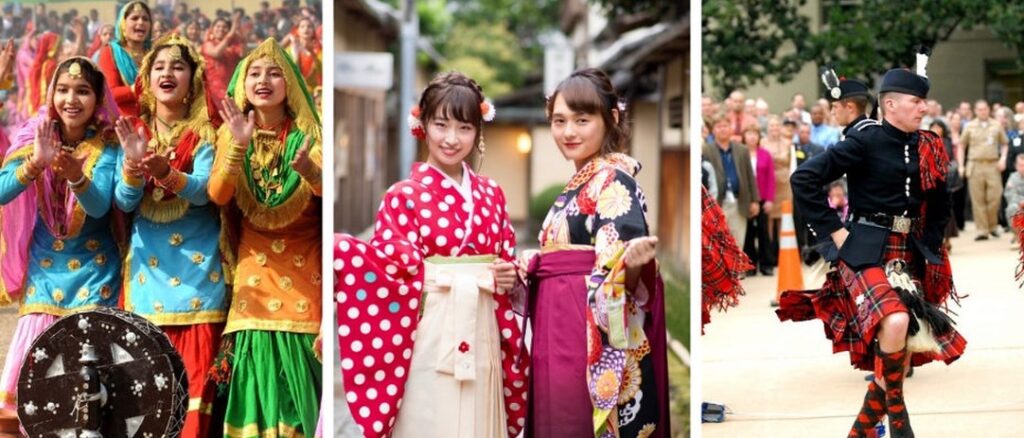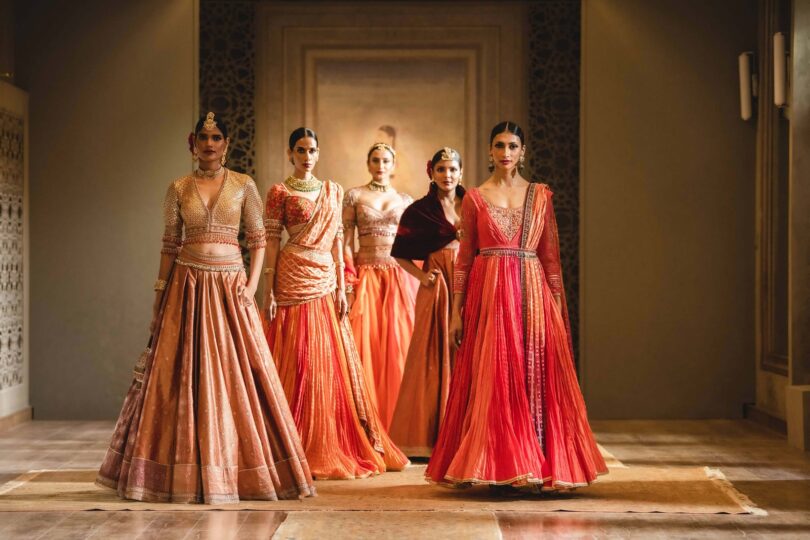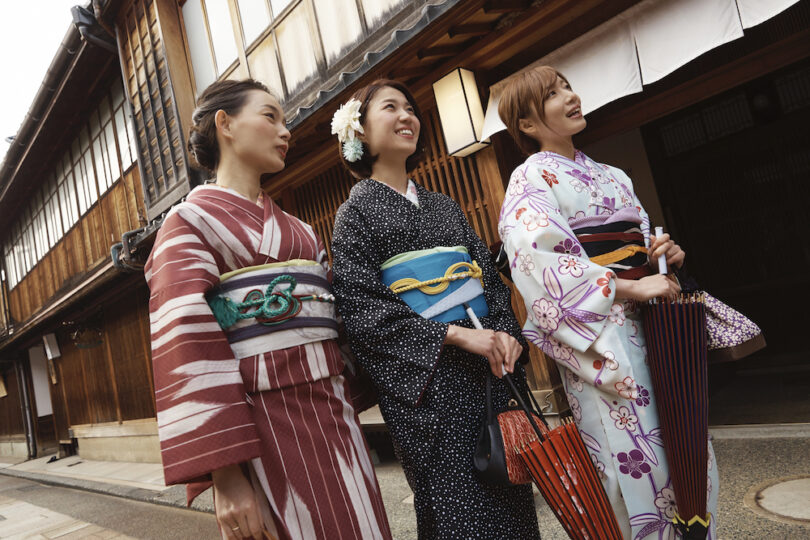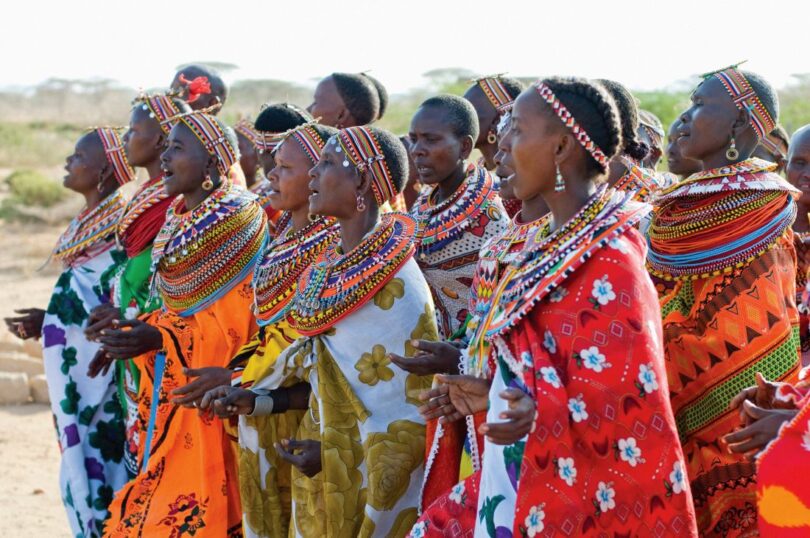Interesting Clothing Traditions From Around the World

Source:outandaboutmag.com
Clothing is one of the essential basic needs for all humankind. We have made use of clothing to protect ourselves from the perils of nature. Our ancestors made use of thick fur from animal skin to protect themselves from the freezing temperatures of the ice age. Clothing was a primary reason we didn’t go extinct during the ice age.
Clothing has helped us fight warm temperatures well, as our ancestors, over millennia of trial and error, understood that cotton fabrics suited the human body in the sweltering heat. Humanity, over time, has understood that everything they have discovered or invented can have more than one use. Just as we now do not have to fight against apex predators, live in caves, and eat to survive, practices and routines in an average human life have changed over time.
Food then was crucial only and only for survival. Humans ate anything that they could get. As time passed, we’ve changed our notions of what food is used for. We today eat food not only to satisfy our hunger, but we also make food a vital part of our tradition and cuisine. If you want to know more about nationality clothing, visit here.
In the very same way, clothing has also had an enormous change throughout history. Clothing is now an integral part of our identity and is also an extension of our speech which nonverbally communicates our identity and preferences to others. Clothing has been a banner of identity and tradition for countries all around the world.
Clothing Traditions Around The World
Throughout the years, as people clustered in large numbers in the same place, civilizations, cultures, and countries emerged. Clothing is a crucial part of reflecting the history and tradition of a nation. Being said that, let us now jump into the practices of clothing all around the world.
India

It is only apparent to start with the country known worldwide for its rich history, culture, and deep-rooted traditions in day-to-day life. India is known for its ornate temples and being a massive cultural hotspot for natives worldwide. The Sari for women and the Dhoti for men is the national clothing of India.
The Sari is the leading clothing of women traditionally in the country. The usage of a Sari dates back to the very establishment of Indian civilization itself. It is considered to be a very sensual yet classy attire for women as it accentuates the feminine curves while still looking elegant and grand.
It is made of two pieces of clothing, one long piece of fabric that drapes everything from the hip to the bottom of the legs, a blouse top for covering the torso region, and the “chunni,” which drapes down from one of the shoulders to the waist.
The blouse covers only half of the torso, and there is a show of waist at the midriff. Saris are widely illustrated in historical scriptures of Indian culture, where women adorn beautiful and grand-looking sarees for all sorts of functions and proceedings.
Japan

The country best known as the land of ninjas and samurais, Japan has a beautiful and rich history that is folklore worthy for individuals all around the world. Japan is a country known for the importance they put on family and traditional values and have a strict clothing regimen.
The traditional clothing for both men and women is the beautifully designed Kimono. Kimono translates to clothing in Japanese but is now explicitly meant to be a specific type of clothing. It came into existence during the Heian period (794-1192), and it is unisexual clothing.
Both men and women wear this clothing during essential functions and proceedings. It is an article of T-shaped clothing that is most commonly designed in black for men and various shades of pink and white for women, although today, the sky’s the limit on color combinations. The Kimono is a perfect mix of grace, elegance, and beauty for Japanese nationals.
Kenya

The tiny African country makes a lot of noise by standing out with its personality alone. This personality is reflected through its clothing style. The traditional clothing in Kenya is called the Maasai beadwork. Yes, that’s right. Clothing where the majority of the dress isn’t even fabric; it is jeweled beads.
It is considered a standard responsibility of Maasai women to be familiar with the art of making jewelry. The ornate beadwork isn’t only used as a form of clothing, but it is also a pivotal element in serving Kenyans’ identity. The beadwork worn by each person is a reflection of particulars such as social status, age and is deeply rooted in their culture. It is unisexual as both men and women can wear it.
Ireland

Ireland is the land known for its deep and profound connection to music. Ireland is known for its traditional clothing, the birth of Celtic ballads, and U2 rock and pop. Ireland is also known for its whiskey, made famous by mixed martial arts fighter and businessman Conor McGregor who founded the Proper 12 Irish whiskey company.
Coming to clothing, the traditional dress of Ireland is more than one. They have various types of clothing that are deeply rooted in Irish tradition. The traditional clothing of Irishmen has been in relation to the classes of society. Irish peasants used to wear pretty much simple clothing: a shirt and bottom of the Leine.
A Leine is knee-length clothing that both men and women wore. The more defining dress was the Kilt, also known as a man-skirt in Ireland. Men used to model the Kilt till the 20th century. You might have seen cartoon illustrations of Irish bagpipers dressed in kilts while playing the instrument.
Another piece of clothing widely used was the brat, a cloak-like fabric worn by rebels in mountainous regions to protect them from the cold weather.

 How to Make Cute Luggage Tags? 4 DIY Tips
How to Make Cute Luggage Tags? 4 DIY Tips  6 Best Gifts for Nature Lover Girlfriend
6 Best Gifts for Nature Lover Girlfriend  What Is the Etiquette for Sending Sympathy Flowers?
What Is the Etiquette for Sending Sympathy Flowers?  Most Popular Flowers in India
Most Popular Flowers in India  A Complete Guide to Personalized Gift Ideas That Carry Real Thought and Value
A Complete Guide to Personalized Gift Ideas That Carry Real Thought and Value  Neuschwanstein Castle From Munich Day Trip Guide
Neuschwanstein Castle From Munich Day Trip Guide  Oxford ─ England’s City of Dreaming Spires
Oxford ─ England’s City of Dreaming Spires  Creative Gift Ideas for Anime Lovers and Collectors: Unique Picks You Will Adore
Creative Gift Ideas for Anime Lovers and Collectors: Unique Picks You Will Adore